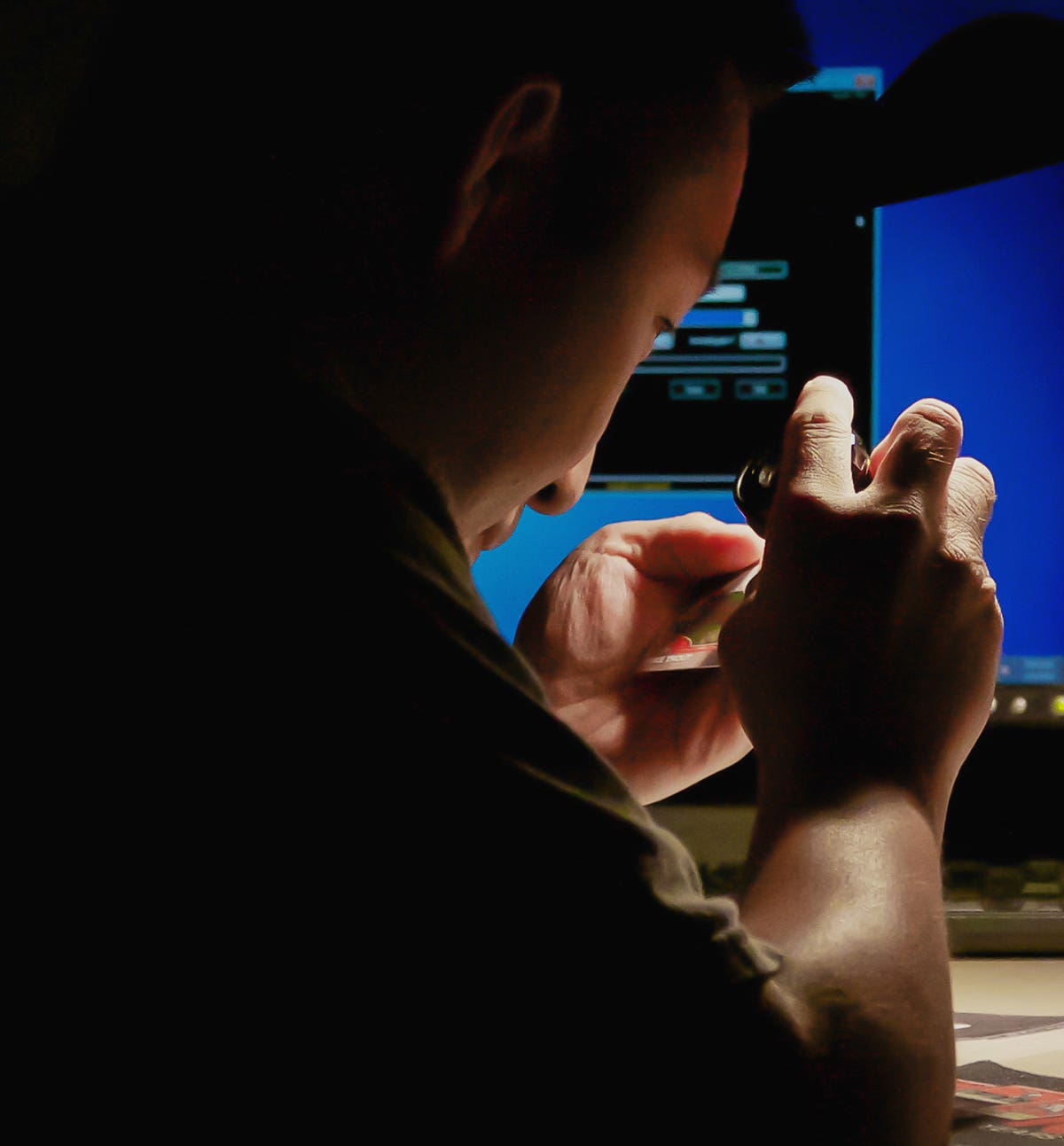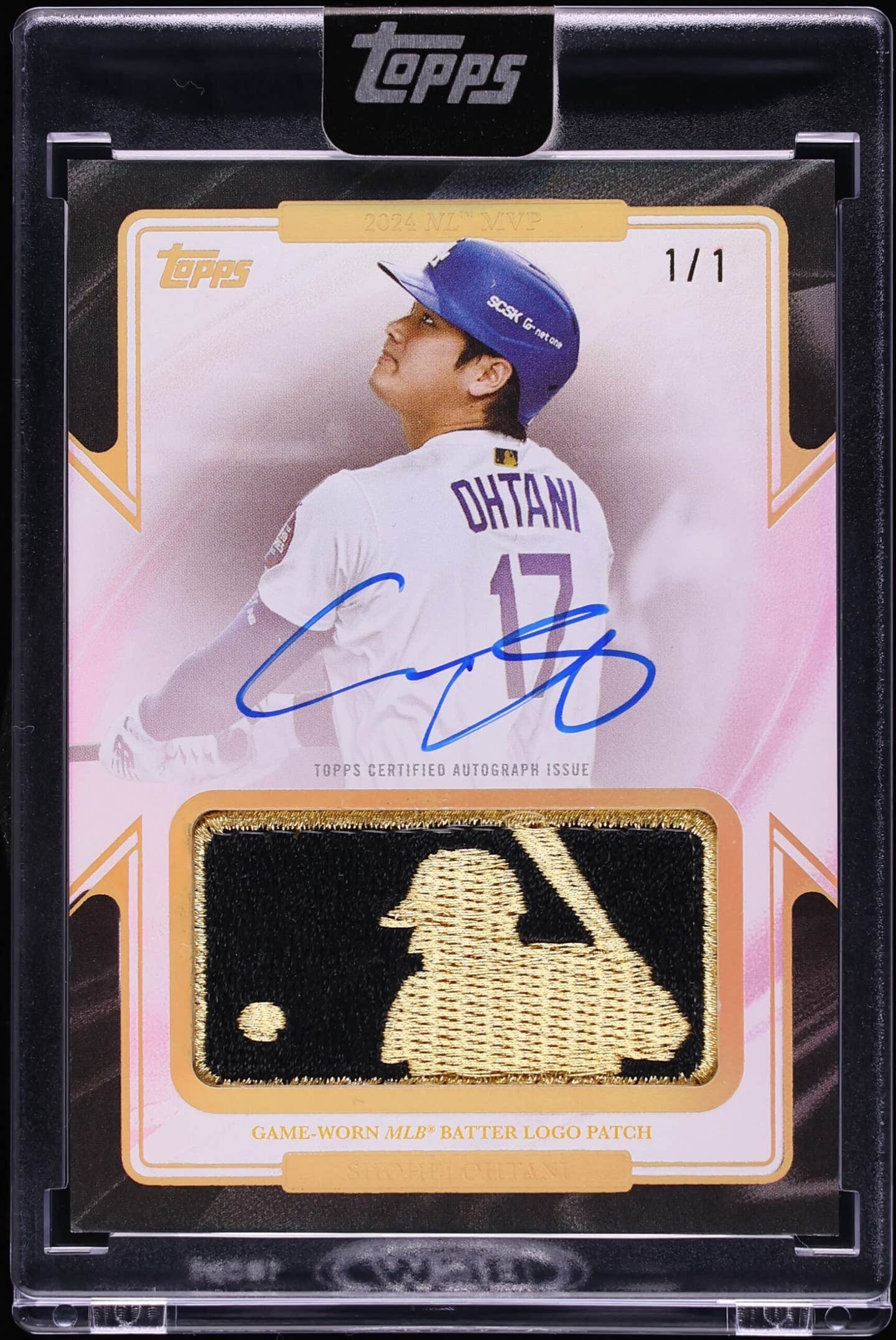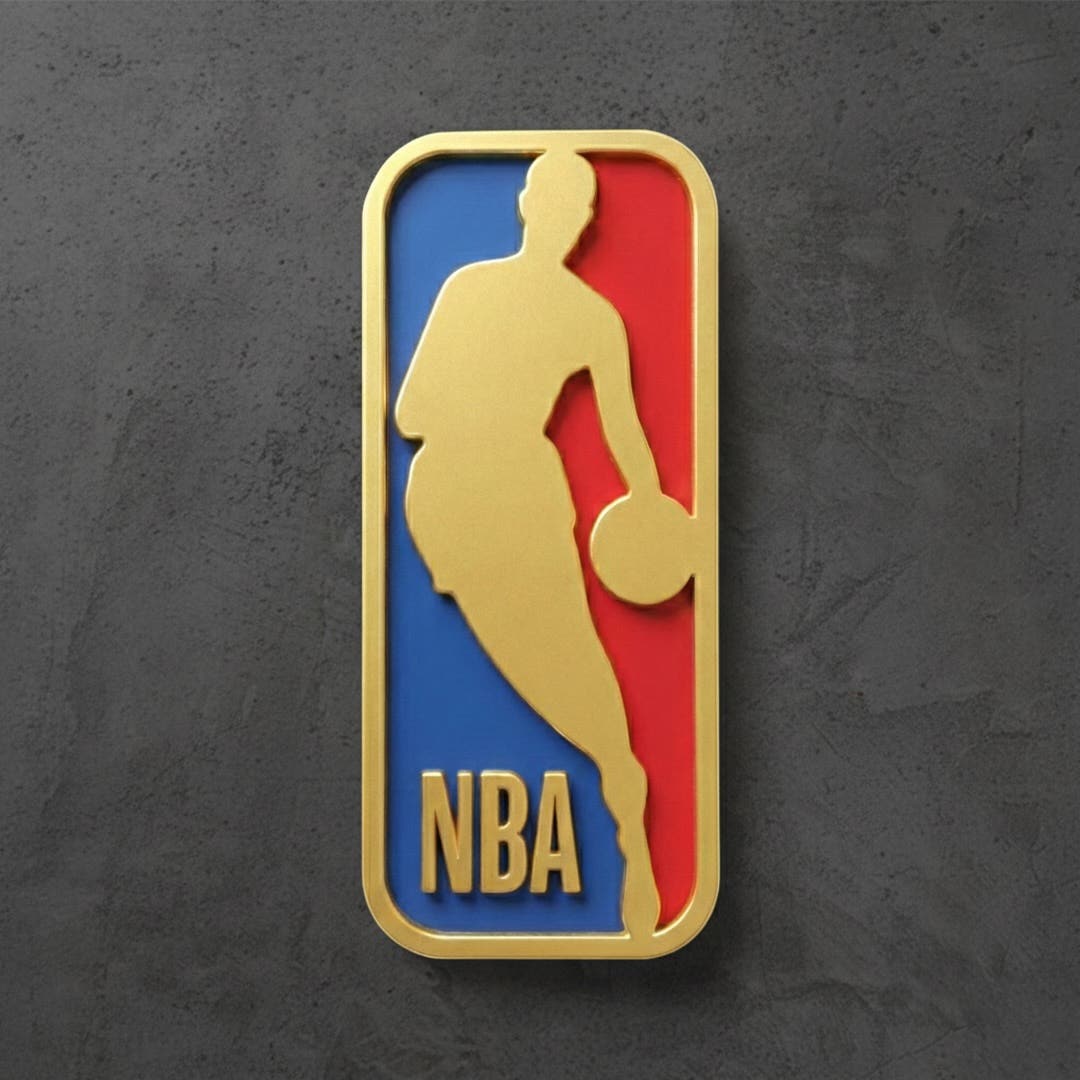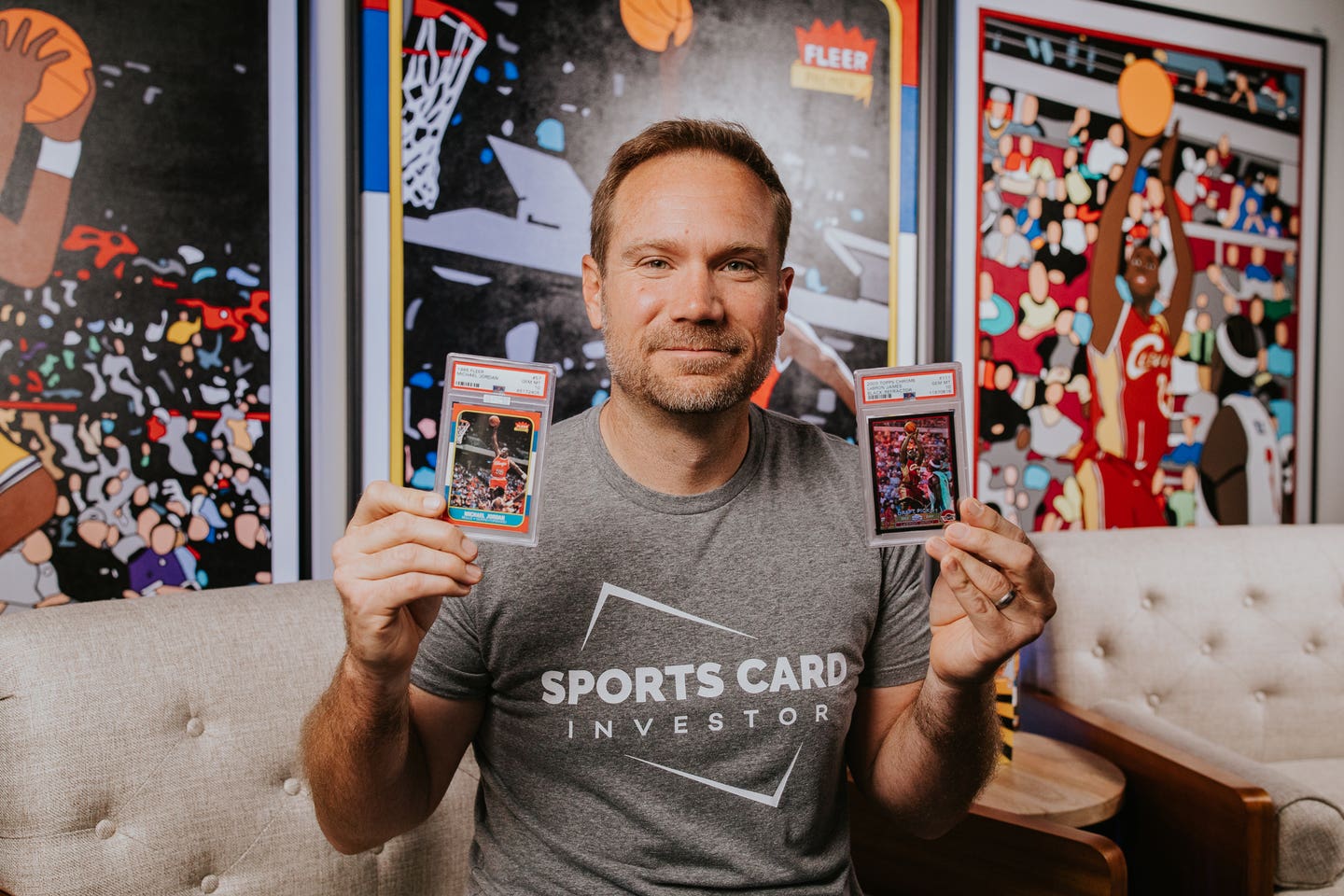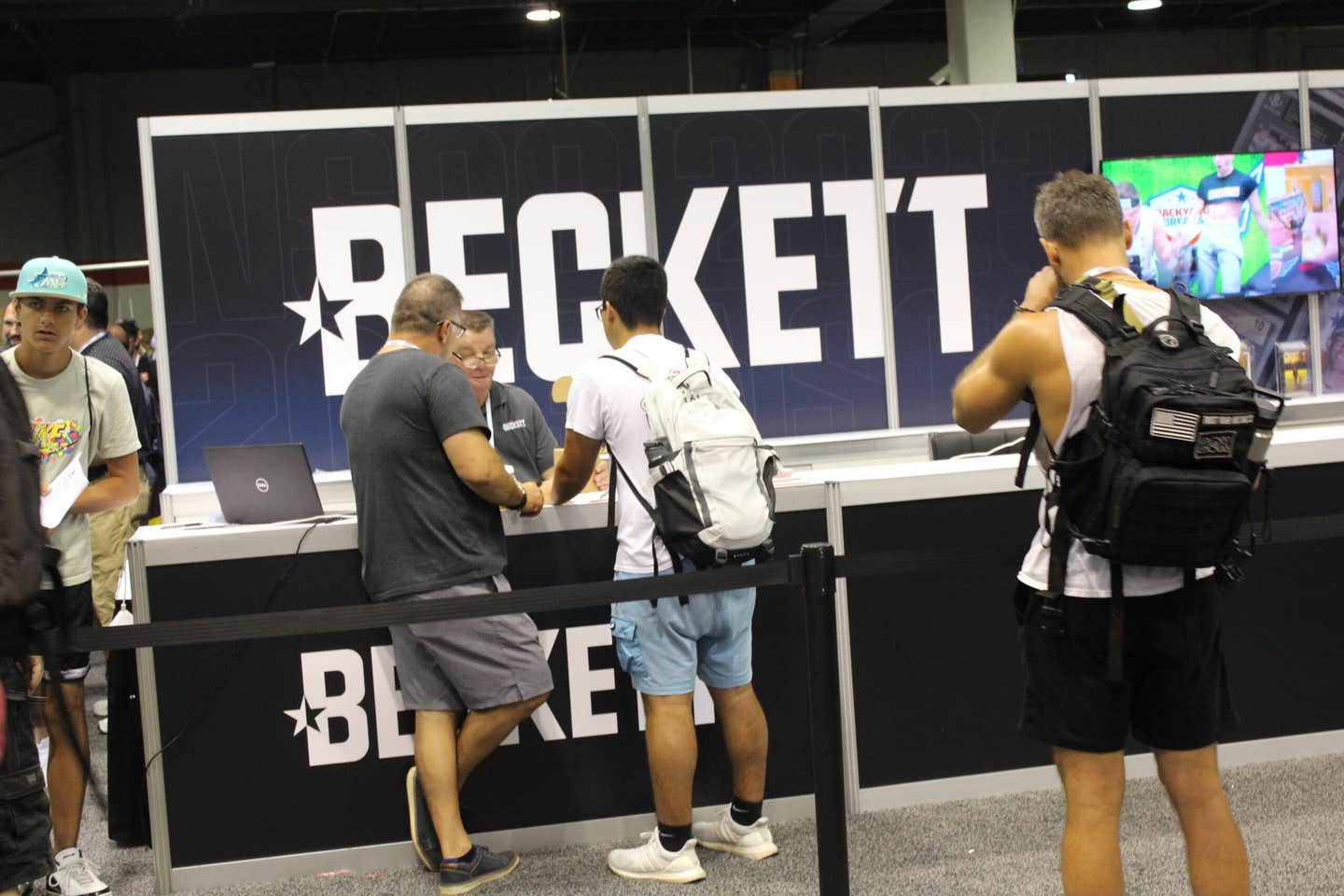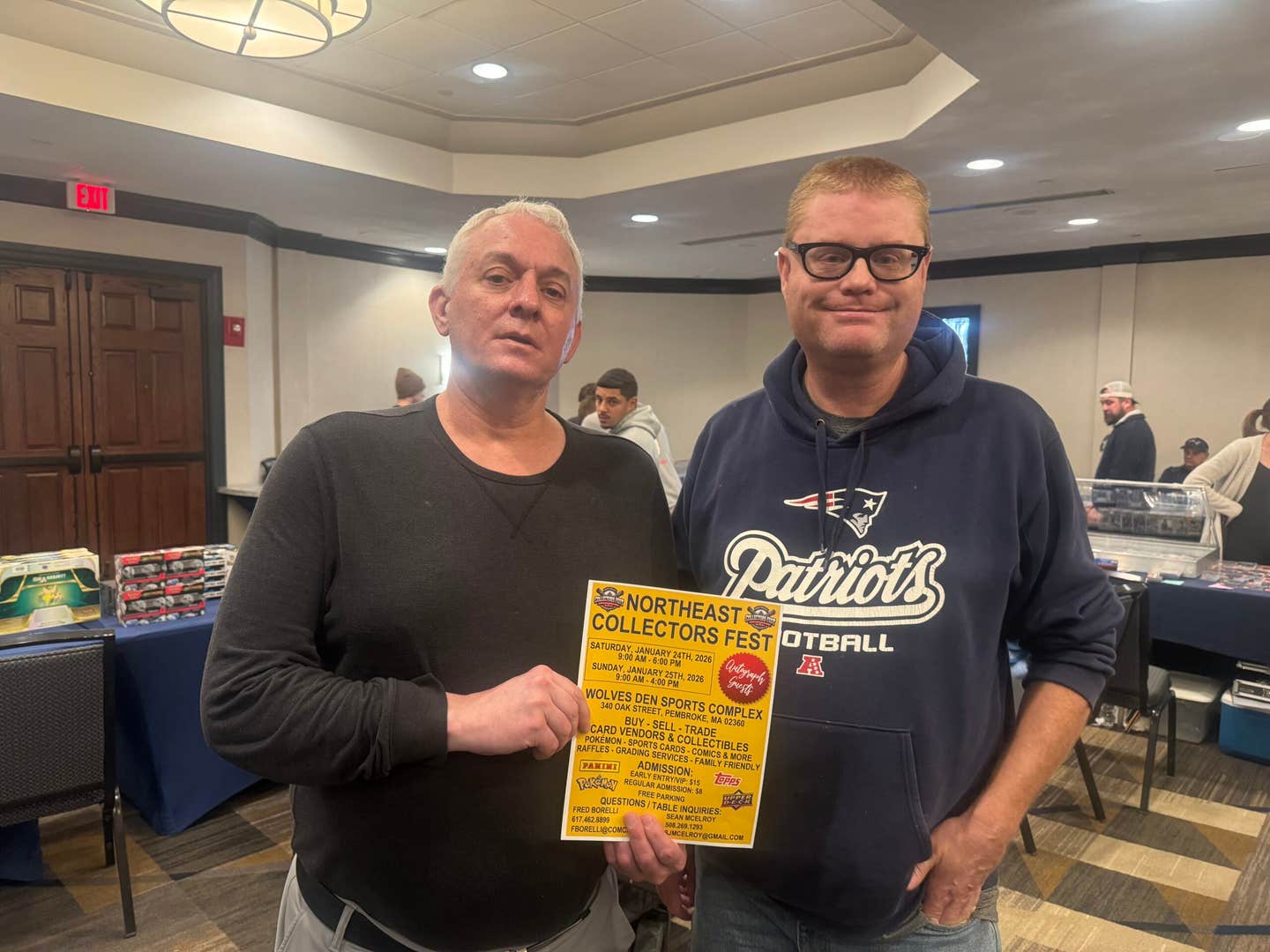News
When Masterson bested the mighty Feller
It was 1945 when the Washington Senators made their last serious run at an American League pennant. It had been more than a decade since they’d last captured a flag, and the Washington fans were rabid with pennant fever. The second-place Nats ran their record to 81 wins and 61 losses (and two ties) following their 5-1 win over the Indians at Griffith Stadium on Sept. 12. They were trailing the league-leading Tigers by only 11/2 games, but there was an undercurrent of desperation in the air because the Tigers were getting significantly better as more and more players-turned-servicemen returned to their teams following the end of World War II. Hank Greenberg had rejoined the Tigers in July after four years in the Army, and any day now, right-handed ace Virgil “Fire” Trucks was expected to leave the Navy and rejoin an already impressive Tigers pitching staff.
The Senators, on the other hand, had welcomed All-Star third baseman Buddy Lewis back to the team in July, and while his return from the Army Air Force provided a boost to the club, Cecil Travis’ September return from the Army would, unfortunately, prove disappointing.
Nats manager Ossie Bluege knew he would need someone to bolster their pitching staff, much in the way that Trucks would provide a shot in the arm to the Tigers – but who? Bluege contemplated this dilemma during his club’s 5-1 trouncing of the Tribe on this day, but Ossie knew that the next day’s game provided a new challenge: Bob Feller. Feller himself was just a few weeks back from overseas, but he was, nonetheless, demonstrating mid-season form. Senators owner Clark Griffith had assured Bluege that help was on the way – but would it arrive in time to face Feller? And if this help in fact arrived in time, would it be up to the task of dueling Rapid Robert? The “help” upon which Bluege hung his hopes was a 6-foot-2-inch, 190-pound, 25-year-old right-hander named Walter Masterson.
Masterson arrived at Griffith Stadium one hour before the big game against Feller and the Indians. Appearing confident and self assured, he cut a dashing figure, fit and trim and smartly dressed in his Navy petty officer’s uniform. Despite the fact that Masterson had been out of the Navy for less than 24 hours and had not thrown a baseball in months, Bluege seemed to have absolute faith that Walt was up for the job of taking on Feller. Displayed neatly for Masterson upon his entry in the Nats clubhouse was everything he would need to battle the Indians: uniform, spikes and glove. Well, almost everything.
Bluege was concerned when he finally saw Masterson and realized that Walt had not yet suited up, so he asked what was going on. “Well,” Masterson said coolly, “we have a little problem here. We’re going to have a game here in about an hour, you have a full ballpark and I don’t have a contract. Sorry, Ossie, but there’s just no way that you and I can work this deal out right here. You are either going to give me a contract right now or not, but you don’t have the power to do that even if you wanted to,” Masterson added.
“Oh, hell,” said the mild-mannered Bluege, his face registering exasperation over the situation. In spite of the hard line Masterson was taking with Bluege, the two were very good friends. In fact, Bluege was the first person in the Senators organization to ever catch a pitch thrown by Masterson.
It was back in the fall of 1938, shortly after Nats super-scout Joe Cambria escorted the 17-year-old Masterson to Washington so Griffith could have a look at the highly touted kid from Philadelphia. Masterson was led to the ballfield where the club was working out. Somebody hollered for somebody else to come and catch the kid, so Bluege, then a 38-year-old third baseman in his 18th and final season as a player (all with Washington), trotted over to do the duty.
Masterson, demonstrating his smooth-flowing delivery, reared back and fired a sizzling fastball to Bluege. Two more pitches slammed into Bluege’s weathered third baseman’s mitt before he stood up and said, “Hold steady, kid,” and then ran off. He returned with backup catcher Angelo Giuliani. Masterson resumed throwing, this time to Giuliani, with manager Bucky Harris soon stopping by to size up the youngster’s fast one. Masterson worked out with the club for two more days, with Griffith himself stopping by on the last day.
Griffith liked what he saw and immediately signed Masterson. Cambria, for years and years, loved to brag about how cheaply he could sign talent, and he used the signing of Masterson as a prime example. “We didn’t pay out any big bonuses (in those days),” boasted Cambia. “You could pay more for a hat than I paid for (Mickey) Vernon, (George) Case and (Walt) Masterson. In fact, all that Masterson cost me was an ice cream cone. I signed him when he was 17 and I said, ‘This calls for a celebration.’ So we had a double-scoop ice cream cone.”
The truth of the matter, however, was that the double-scoop cone may have worked to get Masterson to board a train with Cambria to D.C., but it took a $1,000 check from Griffith to get Walt – and his mother – to ink the contract. “I had never seen $1,000,” recalled Masterson. “That was a lot of money in 1938. I knew that my mother and father needed that money, so I said, ‘Fine, I’ll go ahead and sign.’ I was so young that I didn’t even know how to cash the check. It didn’t matter, though, because I was too young to sign the contract on my own. It had to be done with an adult, so my mother took care of the money. I never saw any part of it. That was that!”
Griffith truly believed in Masterson. So much so that he put him on the 1939 Senators roster without a thought of sending the kid to the minors for seasoning. Masterson was dropped off at Charlotte as the Nats broke camp in 1939, but it was just a formality. “Baseball had a rule that stated that you had to come either from college or the minor leagues – you could not come directly from high school,” Masterson explained. “So I pitched in one game for Charlotte and then immediately rejoined Washington. It was essentially a loophole to get around the rule, but it worked out great for me. I didn’t argue!”
Armed only with his Northeast Catholic High School baseball experience, Masterson struggled to learn the craft of pitching while on the job and facing big-league hitters. He spent the entire 1939 through ’42 seasons with the Nats, and while his fastball had remained electric, his lack of an effective complementary pitch led to mixed results, as he averaged just 102 innings pitched and only 31/2 wins per year.
Not to be discouraged, though, Griffith was still a believer in Masterson’s potential as the 1942 season drew to a close. What Griffith was less sure about at that time, however, was whether Masterson would live to reach his potential because he was set to enter the Navy upon the season’s end. That bit of uncertainty led Griffith to make an error in judgment that would come back to bite him on Sept. 13, 1945 – the day three years later when his ballclub would be locked in a pennant race and in need of a quality arm to throw against Bob Feller.
Nicknamed “The Old Fox” because of his craftiness as a pitcher at the turn of the century, Griffith outfoxed himself when he reneged on a deal with Masterson – just as Masterson was leaving for the Navy. “Mr. Griffith and I’d had a verbal agreement regarding my pay prior to my enlisting,” remembered Masterson. “Once I went in, he said, ‘Well, you’re going to be gone now, so forget it.’ So he just cut out our verbal agreement. I never said a word about it, but it was still fresh in my mind three years later when I arrived at the ballpark for the game against the Indians.”
Masterson did quite a bit of pitching during those three years in the Navy. He began his service at Norfolk Virginia Naval Training Station as part of the Tunney Program. The program, named after former heavyweight boxer Gene Tunney, was geared to keeping Naval personnel physically fit as they prepared to go into combat. Masterson pitched for a Navy team at Norfolk, one time even facing his former Nats team in an exhibition game. He then moved on to Hawaii where he continued to pitch – and pitch well – earning the Outstanding Player in Hawaii award for 1943.
His Navy pitching reached its pinnacle in 1944 when he appeared in the Service World Series, a colossal nine-game championship pitting Navy all-stars against Army all-stars. Both teams were loaded with big-league talent, so the competition was fierce. So good was Masterson’s pitching during this period that Joe DiMaggio, who himself had faced Masterson many times as a player with Army ballclubs, declared that Masterson was the best pitcher he’d faced while in the service.
In 1945 it was a different story, however, and Masterson saw a sharp decrease in his pitching activity. “Eventually,” said Masterson, “an admiral pulled four of us out from the Tunney Program and sent us to the worst places in the Pacific – and Midway was where I was sent. We had a screwup on the sub I was on as we went in. We ran aground and lost our forward torpedo tubes. This was well after the Battle of Midway – thank God for that! I was there for six months.” Masterson’s lack of recent pitching as of September of ’45 didn’t seem to discourage the Nats, however, from believing that he was the piece they needed to make a serious run at the Tigers for the pennant.
Masterson was in Guam when he got the news that he was going to be quickly mustered out of the Navy. “Mr. Griffith asked someone over at the Navy Department to get me out, which they did,” Masterson said. “It took some real doing on his part to get me in a position to start against Cleveland on the day I returned.”
However, simply making it to Washington’s Griffith Stadium in time for the game did not necessarily mean that Masterson was ready to pitch. For one, he had not thrown a pitch in months. In addition, he had no idea that the Nats were in the thick of a pennant race until shortly before his arrival in D.C. “I always kept myself in pretty good condition,” Masterson pointed out, “but I was not in shape to start a ballgame. I had not worked out with the team at all. In fact, the first time I had been near the ballpark was that day. And I had no idea what was going on with the team while I was away. There weren’t a lot of ways to get information about the team while you were on a submarine in the middle of the war. You didn’t even really know where you were or what you were doing – except trying to save your butt!”
It was now the pennant hopes of the Nats that Masterson was trying to save – but not until he had a contract. Bluege, knowing that time was short, told Masterson to hustle over to Griffith’s office to see if they could get things worked out. Walt dashed out of the clubhouse and soon found himself face to face with The Old Fox. Not one to pull punches, and even more emboldened by his three years in the Navy, Masterson let Griffith have it. “A few years ago you and I had a verbal agreement,” Masterson said. “Therefore, I think it should be understandable to you that you and I could never do another verbal agreement because I don’t trust you. You stiffed me for $2,000, so why should I sit here and agree to pitch for you now when you already told me a lie before? So, I’m telling you now that I’m not going to pitch for you until you give me a contract — with a raise. Then, after we finish with the raise, you’re going to give me the $2,000 back.”
Griffith, with the distant sounds of a full ballpark in his ears, caved to all of Masterson’s demands and had the pitcher sign a hastily prepared contract. Masterson sprinted back to the clubhouse and quickly dressed, then joined his teammates on the field. The first thing he noticed is just how much the face of his old ballclub had changed during his absence. There were only seven players on the team who’d been there during Masterson’s prewar years: Alex Carrasquel, Dutch Leonard, Al Evans, George Case, Hillis Layne, Cecil Travis and Buddy Lewis. The rest of the team was unfamiliar to him.
It was, in fact, those new Nats who had played the ballclub into a position to win the flag, yet now it was the brash young Masterson who was stepping in at this most desperate moment. It was certainly a situation that could cause resentment in the ranks, but the majority of the wartime fill-in players around the league had long ago accepted the reality that they would be muscled out as the prewar players returned to their teams. This was the undercurrent that, in addition to the fact that the impending game with the Indians was critical to the Nats’ pennant hopes, only increased the pressure on Masterson to deliver.
Masterson felt good as he loosened up with catcher Rick Ferrell. He then strode calmly to the mound for the top of the first inning as Indians leadoff man, centerfielder Felix Mackiewicz, swung a few bats and then stepped in to hit. Despite appearing cool and collected, there was a bit of uncertainty in the back of Masterson’s mind. “I had no idea that they’d throw me into a game so soon without giving me any time to get in shape,” he said, “but I made up my mind just to do the best I could do.”
His best turned out to be astounding. A headline in the next day’s New York Times summed it up, blaring, SENATORS TRIUMPH OVER INDIANS, 4-0 — MASTERSON HURLS 2-HITTER IN OUTPITCHING FELLER. The Times’ recap of the game went on to say, “Walter Masterson stole the show from Bob Feller tonight, hurling the Senators to a 4-0 victory over the Cleveland ace. Masterson let the Indians down with two hits and changed the complexion of the exciting American League pennant race by pulling the Senators within one-half game of the pace-setting Tigers.” Masterson was dominating in the game, only once getting into trouble after allowing a hit, walk and a passed ball in the third. He escaped from the one-out jam, however, when he, according to the Times, “cut loose with a blazing fastball almost as swift as Feller’s to strike out Mackiewicz,” then retired Mickey Rocco on a fly ball.
The notoriously light-hitting Masterson even chipped in a single in the Nats’ weak seven-hit attack on Feller. As soon as the last out was recorded, Masterson walked off the hill, validated in the eyes of his new teammates – and the 24,606 cheering fans in attendance. In a perfect world, Masterson’s triumphant return would have continued. With Masterson’s leadership, the Nats would have captured the American League pennant and then the World Series. But it didn’t work out that way.
Washington still had 11 games left to play following Masterson’s victory over the Indians, and Walt appeared in three of those games. Four days after his Cleveland win, Masterson started against the first-place Tigers but didn’t figure in the decision. He appeared to pick up right where he’d left off against the Tribe, looking sharp while shutting out Detroit for the first five innings of the ballgame. But he then showed signs of being human. Staked to a 5-0 lead, Masterson seemed to labor in the sixth – most likely due to fatigue finally catching up to him – and the Tigers knocked him out of the box with a game-tying five-run rally. The upside was that the Senators went on to win the game, 12-5, thanks to a seven-run uprising in the seventh and eighth innings. The win moved Washington to within 11/2 games of Detroit.
Masterson pitched solidly in his next appearance, a long relief stint against New York at Yankee Stadium on September 21. Johnny Niggeling started, but was ineffective and removed after just one inning. The Nats were trailing, 3-0, when Masterson took over to start the bottom of the second, but Washington tied the game in the top of the third. Masterson pitched six innings and yielded two tallies – the key blow being a solo homer by Snuffy Stirnweiss. It went in the books as a 5-3 Nats loss, with Masterson being the losing pitcher. The defeat left Washington 11/2 games in back of Detroit, with just three games remaining on the Nats’ schedule.
The final date that Masterson pitched that season – Sept. 23, 1945 – is a date that has lived in infamy for Nats fans old enough to remember it. Washington, still trailing the Tigers by 11/2 games, was in Philadelphia to close out their season with a twin-bill against the Athletics. Dutch Leonard started the opener and held the A’s scoreless for seven innings, but Philadelphia tied it at 3-3 in the eighth. Masterson was called on and pitched scoreless ball through the 12th – and that’s when George Binks had the misfortune of not having his sunglasses on.
A’s leftfielder Ernie Kish lifted a routine high fly to Binks in center. It had been cloudy for most of the day, but the sun had started to break through periodically in the top of the inning while Washington was at bat. In fact, Sam Chapman, the Athletics centerfielder, called time in the middle of the top half of the inning to go get his sunglasses. But it was still mostly cloudy when the Nats took the field for the bottom of the 12th, so their outfielders did not wear their sunglasses. That turned out to be a big mistake for Binks because the sun broke through the cloud cover just as he settled under Kish’s pop. Masterson watched helplessly as Binks lost the ball and Kish reached second base with a double. The game ended with devastating finality two batters later when George Kell singled to drive in Kish with the winning run.
Masterson did not take well to losing in this manner. He walked off the mound and into the Nats dugout, cursing the whole way, then flopped down on the bench. “I was raising hell at the guys I was sitting on the bench with,” said Masterson. “A bunch of so-and-so’s! I blamed them, which I shouldn’t have done. I just sat there and raised hell with anyone wearing a Washington uniform. The war had changed me. They had no way of understanding what I had been involved in for the last three years. If I had been involved with what they’d been doing over that time, then I would have been more in step with them. I wasn’t old enough to know what the hell was going on, and, consequently, I have no idea why somebody didn’t whack me around a little bit. It probably would have helped me had someone tried!”
Continuing, Masterson said, “Joe Judge, one of our coaches, was so upset over Binks’ failure to wear his sunglasses that he waited in the clubhouse with a bat in hand. I guess Judge was going to nail Binks when he went by. He was ready to kill him. It’s a good thing they didn’t cross paths. The reaction was out of character for Judge. He was a nice guy. He owned a bar in the area. That was his last game in the majors, though – he retired right there.”
The Nats won the nightcap of the ill-fated doubleheader, but the missed opportunity of the Masterson/Binks game hung in the air. Washington had played out its schedule, but Detroit still had four games remaining. The Tigers needed to win just two of the four games to take the pennant outright, so the Nats players and fans could do no more than wait and hope for a Detroit collapse. It never happened. The Tigers split the first two games with Cleveland, meaning that the best the Nats could now hope for was a tie. Detroit traveled to rainy St. Louis where they were to play their last two games against the Browns – the American League’s defending champions.
The rain in St. Louis continued, delaying play for a few excruciating days. Finally, despite the continuing rain, the Browns and Tigers took the field at Sportsman’s Park for a season-ending doubleheader on Sept. 30 – a full week after the Nats’ last game.
Meanwhile, as Masterson summed up, “The Tigers would win the pennant outright if they beat the Browns, but if they lost there was going to be a playoff between them and us up in Detroit. So we got on a train for Detroit the night before the Tigers-Browns game. But we learned that the Tigers won the game before we even got to Detroit, so as soon as we go there we boarded another train and headed back to Washington.”
As it turned out, the “returning war hero ballplayer” theme was not exclusive to Masterson and the Washington Senators. The Tigers had their own similar story, and they rode it all the way to a 1945 World Series title. Virgil Trucks, himself mustered out of the Navy only days before the Tigers faced the Browns in the season-closing twin bill, was the winning pitcher in the opening game against the Brownies. His accomplice was slugger Hank Greenberg, who blasted a game-winning grand slam that locked up the pennant for the Tigers – and slammed the door on a fairy tale ending for the Nats and Masterson.
Neither the Senators nor Masterson ever again got as close to a pennant as they’d gotten in 1945. The Nats subsequently returned to their familiar place in the American League’s second division, then bolted to Minnesota for a new start following the 1960 season. A replacement expansion team was awarded to Washington for the 1961 campaign, but it, too, failed to ever come as close to an A.L. flag as the ’45 Nats. Like it’s predecessor, the expansion Senators left D.C. for greener pastures, jumping to Texas following the 1971 season. Washington remained without a baseball franchise for 35 years until the Montreal Expos relocated to D.C. in 2005.
The years since 1945 were not as hard on Masterson as they had been on the Washington Senators. In fact, Masterson, an upbeat 87-year-old now living in Durham, N.C., says life’s been great to him. He remained with the Nats until traded to the Red Sox in June of 1949, in the meantime making the 1947 and ’48 A.L. All-Star teams.
The Sox returned Masterson to the Senators in June of 1952 – a situation that was just fine with him. “Griffith Stadium was the best place in the world to pitch,” Masterson recalled enthusiastically. “All you had to do was let them hit the ball, then let your outfielders go get it. There was a lot of room out there. It was beautiful. Fenway Park was a different story: very small. Once, while I was with Boston, Ray Scarborough and I went out with a tape measure and measured the distance from home plate to the Green Monster in left. At that particular time it was 288-feet. It was like a softball field! The sign on the wall claimed that it was 315. When Joe Cronin, the Red Sox general manager, found out what we’d done, he wanted to kill both of us! Cronin did NOT want that information to get out.”
Pitching as well as he ever had in his career, Masterson was very good for the Nats in 1952 and ’53, winning 19 games for a very poor ballclub over the course of those two seasons. Amazingly, he retired from the game following the ’53 campaign. Just when it seemed like he had truly discovered how to “pitch,” Masterson walked away from the game to pursue business interests at the age of 33. The game was still in his blood, however, and he wanted to return in 1956. Big league opportunities were slim for 35-year-old pitchers who had not played in two years – but there was still someone out there who believed in Masterson. Someone who’d also believed in him way back in 1938: Bucky Harris, his former Nats manager who was now skippering the Detroit Tigers.
Harris brought Masterson aboard and put him to work in the Detroit bullpen. Walt rewarded Harris’ confidence by turning in a solid year, appearing in 35 games for the ’56 Tigers. Masterson’s plans to return to Detroit in 1957 were nixed when Harris was let go following the ’56 campaign, and Walt then failed to catch on with any other big-league club. He tried to hang on by pitching with the Pacific Coast League’s San Francisco Seals at the beginning of the ’57 season, but Masterson quickly realized that the time had come to quit – this time for good.
He remained out of baseball for many years, spending two decades running his own business as a wholesale flour distributor. Ted Williams, Masterson’s good friend, finally lured him back to baseball in 1972 where he served as a roving pitching instructor for the Texas Rangers. Three of the most enjoyable years of Masterson’s life were later spent as the head baseball coach at George Mason University from 1979 through ’81.
Married for 66 years, Walt and Virginia were retired, and both were recovering from recent strokes before his sudden passing. Masterson had been upbeat about their recoveries. In a voice still strong and unwavering, Masterson recently said, “I seem, most of the time, to be making a full recovery. I have a young speech pathologist who has really helped me. It’s coming along and I am working on a few speaking arrangements with Rotary and Little League. I’m also now getting help from the V.A. I still walk two miles a day, so things are great.”
While Mastersoncould still get worked up when confronted with the topic of the 1945 Senators and George Binks’ fly ball lost in the sun, he didn’t dwell on it. But baseball remained in his bones. A couple of years ago he wrote two informative manuals aimed at showing young coaches how to teach the game.
No doubt, Masterson was always thinking about baseball. In fact, he recently sat bolt-upright in the middle of the night and said to himself, “Holy cow – pitchers and hitters are exactly the same!” It was an epiphany that had finally come to him based on heady concepts of pitching and body control offered to him years ago by everyone from the great pitching coach Johnny Sain, to Ted Williams, to Japanese and Chinese philosophers, and even a female ballet instructor at Temple University.
Now that’s being a baseball man to your core.



